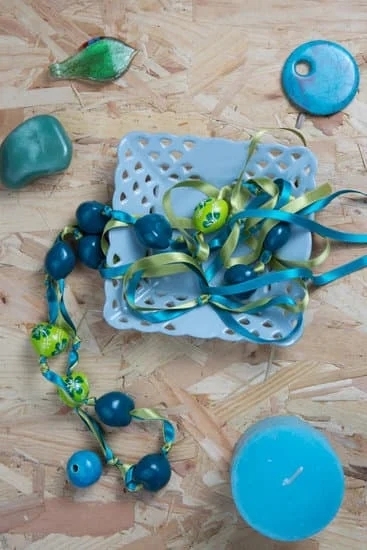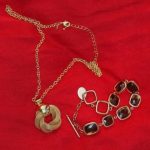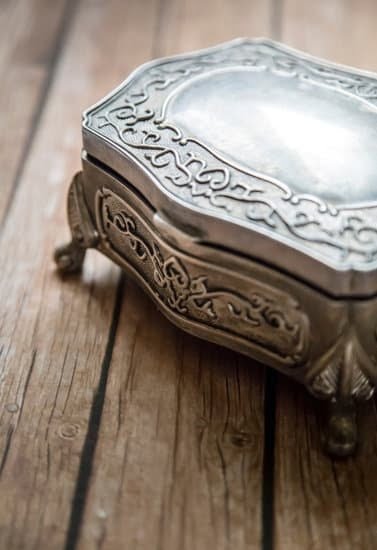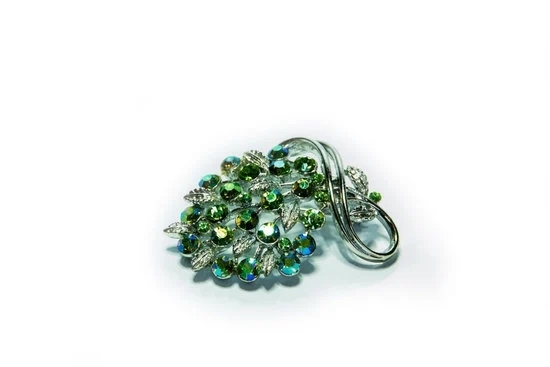The Art Deco jewelry period, spanning from the 1920s to the 1940s, was an exciting time in the creation of unique and stylish jewelry. Jewelers created unique pieces using precious metals, stones, and creative motifs that reflect this period’s dynamic culture. During this era, circular shapes and geometric lines were commonly used that referenced modern
art movements such as Cubism, Bauhaus, Futurism, and more. This new type of design also blended influences from ancient cultures – particularly Egyptian – incorporating sphinxes, sunflowers, scarabs into their designs.
In designing Art Deco jewels during this period, jewelers experimented with a range of materials including platinum, diamonds and other gemstones for larger pieces. Precious metals such as gold were traditionally melted down and reworked into beautiful objects of delicacy. Diamonds were the most classic choice in terms of gemstones; however sapphires, rubies or emeralds could be used to create stunning sculptures around opal centers with less common elements such as coral or turquoise also included in smaller pieces.
To ensure they could maximize novelty without compromising on practicality among other aesthetic factors during this period jewellers often opted for removable elements that composed individual components that could be interchanged to create different looks. These semi-preciosus items adorned with enamels or pierced detailing provided an perfect range for owners to customize their own look every day adding versatility yet uniqueness to their own style wardrobe not only then but today too.
Focus on Historical Context
The Art Deco jewelry period was an influential time in world history that began with the Great War, or World War I. As a result of the death and destruction brought forth by this war, a sweeping desire for change developed across many nations due to increases in optimism associated with scientific advancements and the exploration of new technologies during this era.
Artists of all kinds were eager to create something new and visually arresting to move away from tradition, stirring up decadence and extravagance as a way to express their unconventional ideas. This newfound enthusiasm for revolution spanned artistic styles in areas like fashion, architecture, design, and more importantly – jewelry making.
The defining characteristic of Art Deco jewelry was bold geometric shapes inspired by modern art movements such as cubism, abstract art, and constructivism. Materials used during this period varied from platinum and white metals adorned with diamonds to glass stones encrusted in gold-plated frames.
Many pieces feature color blocking (particularly with yellow gold or rose gold), symmetrical designs (like parallel lines), or modern details such as square cut rubies or emeralds arranged into distinctive shapes. Trade restrictions imposed upon precious materials during World War I caused certain alternative materials such as silver alloys and plate metals to become popularly incorporated into creative pieces like bracelets and necklaces at affordable prices – adding a touch of elegance while still under budget.
Despite such harsh economic conditions resulting from World War I, countries worldwide expressed lavishly in their ornamental possessions that typified this unique period; drawing upon ancient themes for inspiration but focused on capturing the essence of an optimistic approach towards life – embracing progress regardless of turbulent political times. Thus began the highly influential period now known as Art Deco Jewelry – an era steeped heavily in symbolism which continues to be appreciated to this day in fashion trends around the world.
Expanded Look at Iconography
The Art Deco jewelry period featured a range of iconic visual motifs, each with its own unique symbolism. These motifs celebrated the era’s exoticism and romance as well as references to the industrial age that was just starting to take shape in Europe and America. One such iconic symbol that was quite popular during this period is geometry.
Geometric shapes were often used to create modern looking jewelry designs with a distinct aesthetic. Circles, triangles, squares and rectangles were among the common geometric elements utilized in making jewelry during this period. This use of geometry provided an opportunity for additional symbolism due to it having a connection to different countries, religions or cultures and allowing them to be reflected back onto one another through the Art Deco style.
The Art Deco jewelry period also featured symbols related to mysticism and religion such as crosses, stars, moons, and church-like architecture/tones often seen on bracelets or pendants. Not only did these symbols convey meaningful messages like hope, luck or faith but they also carried traditional messages from past eras into the modern day.
In addition, many pieces of Art Deco jewelry featured icons dedicated specifically to science and progress such as aviation designs on watches or interlocking circles symbolizing electricity which could be found on earrings or necklaces.
Lastly, various animals were used as abstract symbols throughout this era as well both real and mythological creatures like canines, tigers, dragons and birds either alone or sitting atop vast amounts of precious metals like gold or silver along with intricate gemstone detailing.
Animals have always been used as symbolic motifs throughout human history so it isn’t surprising that they made their way into Art Deco pieces where they served similar purposes while providing a level of sophistication thanks to their delicate ornamentation.
Investigate Modern Adaptations of Art Deco Jewelry
Art Deco jewelry became a particularly noteworthy style during the 1920s and has since become an enduring symbol of elegance. The timelessly chic aesthetic of the period is still very influential today and can be seen in many modern adaptations of art deco jewelry. The use of bold geometric shapes, gold and silver metallics, and materials like glass, wood, and enamel are all elements which have infiltrated current jewelry designs.
Whereas traditionally Art Deco jewelry was typically made using heavy metals such as platinum or white gold, modern design pieces feature more varied material options. This includes mixed-media formats like druzy stones set on delicate metal backings to give a two-dimensional effect. Many of these contemporary takes also employ semi-precious stones in bright colors along with cubic zirconia or crystal adornments.
Lines are kept simple – often linear – while incorporating patterns like filigree, chevron, quatrefoil, and cheetah print made popular at the time. Designers today often choose to play up the flashes of metallic colors within a mostly black tone to create maximum drama in their art deco inspired jewels.
Art Deco influenced jewelry is more accessible now than ever before with high-street designers taking popular cues from this classic look yet making them accessible and affordable across all budgets. This makes it easier to experiment with dramatic costume pieces that take direct references from designer catwalks without breaking the bank.
Adapting trends from this era doesn’t just extend to earrings and necklaces – bracelets too are opting for sleek geometries as well as structural warrior cuffs punctuated by jewelled spikes for an extra glamorous finish.
Altogether, there’s no denying that art deco remains one of the most iconic design movements in history – and its influence on modern fashion continues to endure.
Incorporate Pictures and Visuals
Art Deco jewelry, also known as “Jazz Age” jewelry, is one of the most popular jewelry design periods throughout history. Art Deco style was popular in Europe and North America after World War I. This period focused on decadent and expensive pieces characterized by exuberant shapes, lavish materials and meticulous craftsmanship. The motifs emphasized geometry, symmetry, bold colors, linear lines and machine age aesthetics.
From geometric shapes to vibrant hues, the Art Deco period produced some of the most unusual designs that pushed the bounds for what was considered fashionable at the time. One of the key features of this style is its use of different precious stones including opals, sapphires, diamonds and emeralds set in platinum or white gold which add a touch of glamour to any outfit.
There are many recognizable characteristics that define this era such as sunburst motifs, curved lines and zigzag patterns which can be seen in numerous pendants necklaces or brooches created between 1920s-1930s.
Though these designs were very popular at the time, they remain beloved today; however modern interpretations have been created over time to make them more accessible to contemporary fashion tastes since trends come back in cycles.
While many designers keep faithful recreations of classic designs using only quality materials such as diamonds and gemstones others tend to adopt a modern approach with bolder lines incorporating colorful nuances or new materials depending on their target audience or production method such as 3D printing.
Many luxury brand names capitalize on the timeless beauty from vintage pieces often drastically increasing prices thus raising awareness about Art Deco jewelry even more than before.
Connect to Other Influential Eras
The Art Deco period of jewelry adheres to the modernist style that was popular in Europe in the 1920s and 1930s. This era directly followed the Edwardian period which was known for its elaborate, intricate designs created with craftsmanship.
During this same time period, there were influences from other design movements such as Symbolism, Art Nouveau and Cubism, all of which can be seen in elements from Art Deco jewelry. The marriage between the classic Edwardian designs and styles from these other influential eras gave birth to modernist jewels that pushed into a new aesthetic.
Art Nouveau is often credited as the conduit for moving away from conservative styles towards more eccentric pieces with asymmetrical lines and abstract motifs. Art Deco embraced this freedom of expression through its emphasis on geometric shapes, enameling techniques such as plique-à-jour and different types of media manipulation to create custom looks within individual pieces.
These bold new perspectives also offered wearers an opportunity to express their uniqueness with their choice of jewels which is something we are still very familiar with today.
Another source of influence during this time came primarily from ancient Egyptian art and culture that encaptured audiences worldwide due to Howard Carter’s excavation of King Tutankhamun’s tomb in 1922. The discovery sent shockwaves throughout many artistic mediums including fashion and jewelry design.
Jewelers began incorporating ancient symbolism into stones and metals while adding Art Deco flares creating a unique blend that remains renowned in our era today. For example, classic chain necklaces combined with scarab beetles became increasingly popular pieces as did snake bands adorned with sapphires or emeraldeyes before tapering into intricate pendants or brooches covered in tiny diamonds or pearls offering undeniable opulence with a regal demeanor.
Challenge Assumptions
The Art Deco Jewelry period is widely known for its bold, bright, and audacious designs that were a sharp departure from the more delicate Victorian jewelry of the past. Yet there remains so much more that goes into appreciating an era that truly shook up the concept of jewelry making and wearing.
First off, the era saw a shift away from traditional design elements in favor of geometric shapes – squares, circles, rectangles – as well as linear elements such as zigzags and chevrons performing to create figure-of-eights or sunbursts. This alone is quite enough to demystify any assumptions of dullness or lack of originality.
In addition to these stark shapes, materials changed drastically too during this period. Whereas before jewelers may have incorporated fine diamonds and other precious stones such as rubies or sapphires into their pieces, now luxurious materials such as jade, amber, onyx, mother of pearl and more started to be used by those inspired by Egyptian culture.
Color was therefore another major factor in deco jewelry; black was especially popular for contrast purposes which only further highlighted the daring silhouettes worn with pride by many people in society. Even when diamonds were used within this framework, they seemed far from conventional; marquise turns were favored over round ones because of their strong geometric value while diamond halos around precious stones were also almost unheard of beforehand.
Finally, it is important to remember how universal art deco jewelry has become even today long after its heyday first ended at the start World War II. Its influence is undeniable across all our current trends in fashion not just due to its characteristic shapes but also through its mechanization process revolutionize how items were manufactured in bulk back then – giving birth to our modern idea mass production without sacrificing quality or beauty whatsoever along its way.

Welcome to my jewelry blog! My name is Sarah and I am the owner of this blog.
I love making jewelry and sharing my creations with others.
So whether you’re someone who loves wearing jewelry yourself or simply enjoys learning about it, be sure to check out my blog for insightful posts on everything related to this exciting topic!





